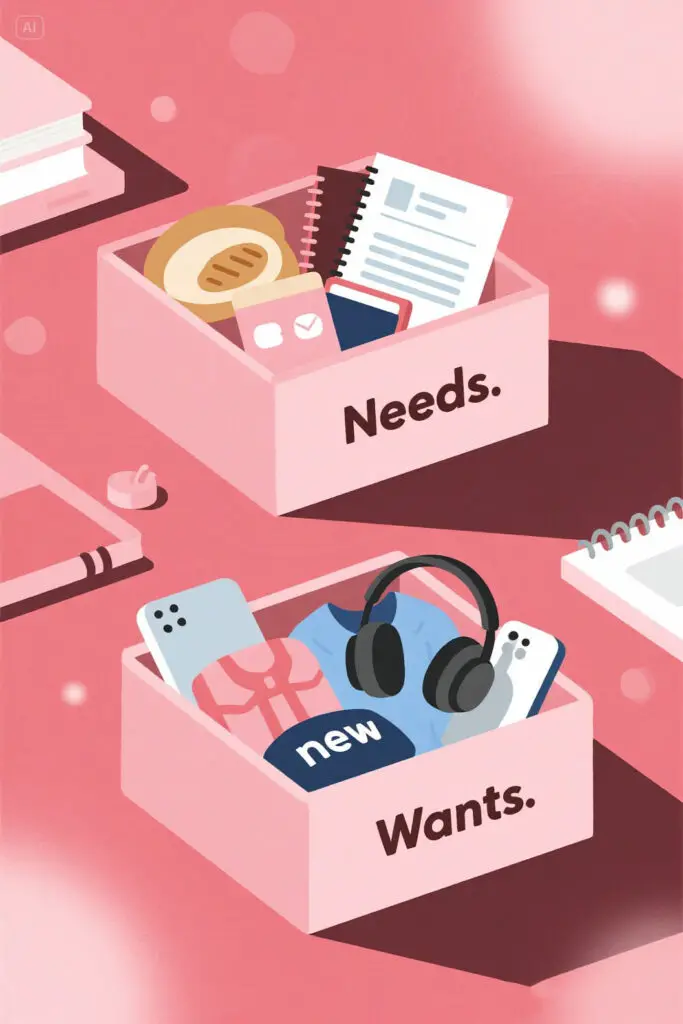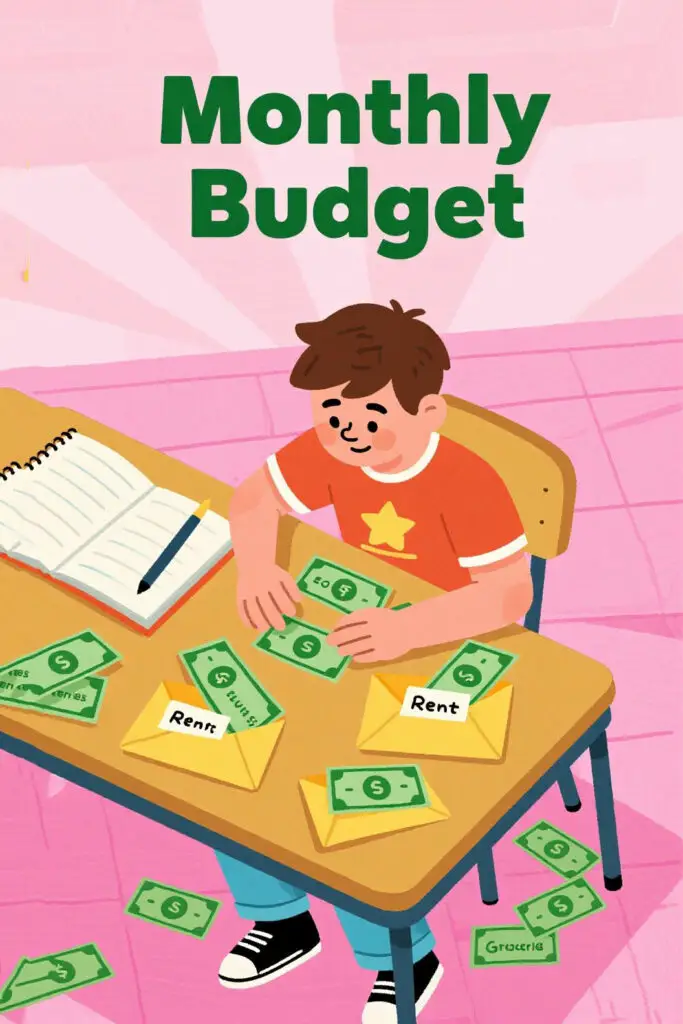Teaching teens about financial literacy is one of the best gifts we can give them because money plays a central role in adult life, yet it is something most people learn after they make costly mistakes. The teenage years are the perfect time to introduce money management because this is when teens start getting allowances, earnings from side hustles, and start making their independent spending choices. Instead of giving lectures, using activities can make the process feel more practical, fun, and teens may actually learn something from the hands-on experience. This article will explore 19 financial literacy activities for teens, helping them build healthy habits and encouraging responsibility for a secure and stable financial future.
1. Create a Personal Budget
One of the simplest and most effective activities for financial literacy is helping teens create their own personal budget. This can be as basic as listing down money coming in, whether it’s from an allowance or a part-time job, and money going out, like food, outings, or savings.
By doing this regularly, they start to see patterns in their spending and learn the importance of planning ahead instead of just spending impulsively.
2. Open a Teen Bank Account
Opening a savings or checking account is a big and exciting step for teens because it brings along the taste of independence and freedom. It’s a chance to actually see how money moves in and out, whether through deposits, withdrawals, or online transfers, and with a little guidance, it also becomes clear why keeping an eye on your balance and avoiding extra fees really matters.
3. Track Spending with Apps or Journals
For an eye-opening activity about spending choices, try tracking spending with apps or a simple journal. While this activity may seem simple, it is highly effective to see unhealthy spending patterns that may be putting your entire budget off track.
Sometimes the smallest of purchases, like snacks or those everyday coffee runs, add up quickly and eat away a huge chunk of your budget. Track your expenses by using a notebook or if you prefer a digital approach, use budgeting apps or create a spreadsheet, and stay aware of what you spend on.
4. Learn the Difference Between Needs and Wants

Many teens may struggle to differentiate between needs and wants which is exactly why this activity is necessary. You can make this activity engaging by giving the teens a small budget and a list of items like food, new gadgets, clothes, and asking them to categorize these items into needs and wants.
This activity can help them realize that while wants are great to have, needs always come first when money is limited.
5. Practice Goal Setting and Saving
Saving without any purpose can feel boring and pointless which is exactly why it is necessary to set goals or targets. Whether it’s buying a new phone, new clothes, or going for a fun trip with friends, giving your savings a purpose can help you become more motivated and consistent to achieve the target.
This activity can show them that discipline and patience brings rewards, and it can also build confidence when you achieve something on your own.
6. Try a Part-Time Job or Side Hustle
What better way to step into the world of finances than to explore it by becoming a part of it? While you’re looking for activities to help you understand financial literacy better, consider the possibility of earning an income through side hustles or part-time jobs.
You can earn through freelancing, babysitting, pet sitting, or run a side hustle based purely on your interests. Not only does this activity earn you an income, it also allows you to explore your skills or pursue your hobbies. You can also learn timeless skills like time management, communication, and responsibility that can serve you in the long run.
7. Simulate Real-Life Expenses with a Paycheck Challenge

For a fun yet serious activity, teens are given a pretend paycheck and a list of expenses, like rent, groceries, and bills and they must figure out how to budget and survive for the month. Teens quickly realize how much money goes into basic living expenses and how little is left behind for fun, and it’s a great way to prepare them for adult life while being in a safe learning environment.
8. Understand Credit, Loans, and Debt Basics
Many of us hear words like “credit card” or “loan” but don’t fully get what these terms mean. A practical activity is to explain how credit works using examples, like borrowing a small amount from you and paying it back with interest. You can show them both the benefits of good credit and the dangers of debt when people spend more than they can repay. This builds awareness before they are old enough to get their own credit cards.
9. Explore Compound Interest with Simple Demos
Compound interest can sound complicated, but with simple activities, teens can easily understand it. For example, show them how money doubles faster when it earns interest on both the original amount and the accumulated interest.
You can also use real-life calculators or online tools to demonstrate how even small savings can grow significantly over time, and once teens see the numbers, they are often motivated to start saving early.
10. Practice Smart Shopping and Price Comparisons
For a hands-on activity done during grocery trips or online shopping, consider the price comparison activity. This activity is all about encouraging logical reasoning by comparing prices, checking discounts, and coming to a conclusion about which option wins over the other.
11. Learn Couponing and Discount Hunting
Looking for discounts, coupons, or student deals may feel small, but it teaches you that saving money is about being smart, not cheap. When you find ways to spend less on the same item, you start to see how every little saving adds up and leaves you with more for things that matter.
12. Run a Mini Business or Entrepreneurial Project
Starting something simple like a bake sale, craft shop, or tutoring gig gives you a taste of real money management. You can see how much effort goes into earning, how to set prices, and why budgeting matters, and the lessons stay with you far longer than just a lecture.
13. Join Family Budget Discussions
Even though it may not seem very exciting, being a part of family budget discussions can help you become aware of how financial decisions are made in real life. You don’t have to get into those complex calculations or figures, instead watching your parents decide how much to spend on groceries, bills, or outings can give you a deeper understanding of priorities.
14. Play Financial Literacy Games and Simulations
Sometimes the best way to learn serious lessons is by turning them into fun activities, and financial literacy games are a perfect example of this. Playing board games like Monopoly or The Game of Life, or even online simulations that let you practice budgeting, investing, or running a business, gives you a chance to make choices, test strategies, and face the consequences without risking real money.
15. Explore Investing Basics with Stock Market Simulators
Using stock market simulators helps you understand that investing isn’t luck but patience and long-term thinking. Watching how fake money grows or shrinks teaches you that smart investing is about planning rather than chasing quick wins.
16. Learn About Taxes Through Real-Life Examples
Looking at a paycheck stub or online calculator shows you that the money you earn isn’t the same as what you take home. Understanding taxes early prepares you for real life and helps you see why planning your income wisely is important.
17. Practice Giving Back with Charity or Volunteering
One of the most meaningful lessons about money is learning that it is not just for spending on yourself but also for helping others, and practicing generosity at a young age can shape how you see money for the rest of your life. This could mean setting aside a small portion of what you earn to donate to a cause you care about, or it could mean using your time to volunteer in a way that makes a difference for people in need.
18. Build an Emergency Savings Fund Challenge
Life doesn’t always go according to plan which is exactly why it is important to keep a safety cushion in place in case of unexpected expenses. Whether it’s a broken phone or a sudden school project expense, having an emergency fund can help you deal with the situation with confidence and responsibility.
Try to put aside little money every week, and over time these amounts can grow into something big and meaningful over time.
19. Celebrate Milestones and Good Money Habits
Rewarding yourself when you reach a goal makes money management feel encouraging instead of stressful. Celebrations don’t need to be expensive, they can be as simple as a treat, a fun outing, or time with friends, reminding you that progress deserves recognition.
Conclusion
Learning financial literacy as a teen is not about becoming an expert overnight, but about building small habits and experiences that make money feel less confusing and more manageable. Each activity, whether it’s tracking your spending, saving for a goal, trying out a mini business, or simply learning through games, makes you more confident in your financial decisions. By starting early and making the process fun and practical, you give yourself a strong foundation that will guide you not only through your teenage years but well into adulthood.
